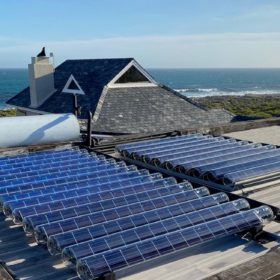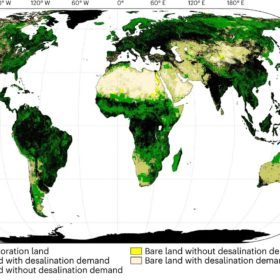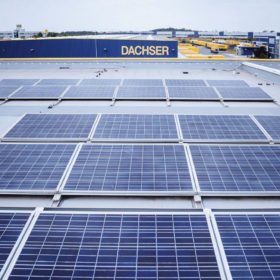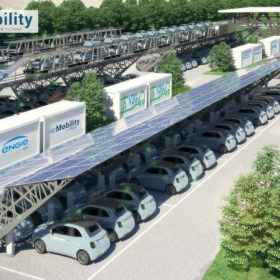Weekend Read: A long time coming
Long-duration energy storage (LDES) is essential for decarbonizing the grid but gigawatt-hour scale systems continue to be tricky for companies with big ideas. Here are some of the latest innovations across a flourishing array of new – and old – ideas.
UK must act now to embed solar in energy transition
Tony Danker, head of the Confederation of British Industry, in January warned the UK is at risk of squandering the vast economic opportunities available to nations investing in the energy transition. Christophe Williams, CEO of solar thermal company Naked Energy agrees, and here spells out some of the urgent actions Rishi Sunak’s government must take to place solar thermal – and PV – at the heart of a green revolution.
New agrivoltaic project to test crop-responsive PV trackers for greenhouses
An international consortium led by Israel’s Al-Zahrawi Society has launched the Regace project to develop agrivoltaic solutions for greenhouses. It will investigate the performance of a new tracking system across locations and climates and use carbon dioxide enrichment to improve crop yield.
Shaping the EU battery value chain
The new EU Batteries Regulation is a blueprint for product legislation, regulating the whole life cycle of batteries in the European Union. Advanced rechargeable and lithium batteries association Recharge says successful implementation of the new regulation requires the prioritization of safety, information reliability, feasibility, market surveillance, and enforcement.
PV-powered seawater desalination for afforestation carbon capture
Finnish researchers have proposed the use of solar, wind, and storage to provide desalinated seawater to restore forests. Their model predicts that an additional 10.7 TW of PV would be needed to actually do this by 2100, leading to a cumulative carbon dioxide sequestration potential of 730 gigatons.
Vanadium’s role in a just transition
The deployment of a vanadium flow battery at a fire station run by Native Americans illustrates the role that the energy storage technology can play in ensuring that nobody is disadvantaged by the shift away from fossil fuels.
Weekend Read: From diesel to DC
For a long while, it looked as if hydrogen fuel cells would be the technology of choice for emissions-free road transport. However, truck manufacturers and freight forwarders recently turned their attention to battery-electric vehicles. This will require special charging technology and PV looks set to play an important role.
Battery supply chain state of health
As the US Uyghur Forced Labor Prevention Act demonstrated, companies preparing to spend big on batteries are at risk of being blindsided by supply-chain-related legislation. Here are some tips on how US developers can anticipate policy curveballs.
EV batteries alone could satisfy short-term grid storage demand
Low participation rates for vehicle-to-grid (V2G) tech of just 12% to 43% are needed to provide short-term grid storage demand throughout the world by as early as 2030, according to a group of Dutch and US researchers.
Weekend Read: Small change, big effect
Starting this year, ground-mounted solar modules in Germany can be replaced before the end of their service life, unlocking gigawatt-scale potential for new generation capacity without lengthy permitting processes or the need for new sites. Opinions differ as to what should happen with the decommissioned but still functioning modules, as pv magazine Deutschland’s Sandra Enkhardt reports.










